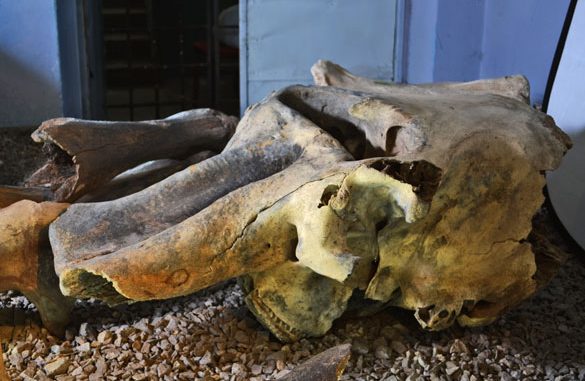
During archaeological research in the village of Kitaygorod of the Tsarychan district in 2007 to the workers of the expedition of the Dnipropetrovsk Historical Museum named after D.I. Yavornytskyi was consulted by local residents who found a mammoth skull at the bottom of the Oril River and raised it from there. On the recommendation of the restorer of the expedition, urgent dehydration and conservation of the find was proposed. In 2012, the skull was handed over to DNIM, where there are better conditions for its display and popularization.
The mammoth is the most visible and numerous representative of the Late Pleistocene fauna. They lived in the north of Eurasia from 250 to 10 thousand years ago. Most of the mammoth bones found on our territory date back to 30,000 years ago. Mammoths reached a height of up to 5.3 m, had a red-brown streak and an 8-centimeter layer of subcutaneous fat. Their main food was tree sap, birch leaves, alder, pine sprouts, steppe shrubs. These giants consumed 300-400 kg of loose food mass per day. About 10 thousand years ago, warming began, which led to the disappearance of these creatures.

